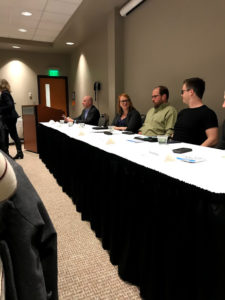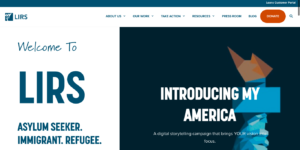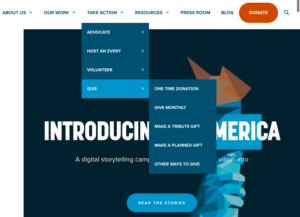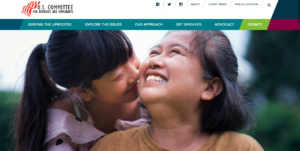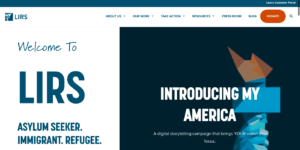Leah Wittler
Joseph Mauler
Janelle Briscoe
Proposal:
After reading and analyzing the book Americanah, Ifemelu’s experiences as a college student resonated with us. We felt the most inspired to do a project that reflected Ifemelu’s experiences in college as a Nigerian student. We believe that it is not fair that people from other countries feel like they have to conform to American preferences. A scene in the book when Ifemelu was registering for classes, the registrar talked down to Ifemelu because she had a Nigerian accent. It said that Ifemelu “shrinks” (Adichie 164) from feeling ashamed of her Nigerian accent. Because of this incident, Ifemelu stops talking in her Nigerian accent and starts practicing an American accent (Adichie 164). We wanted to explore and express Ifemelu’s experience in Chapter 14 facing assimilation struggles due to her Nigerian race in the American classroom.
Our inspiration is supported by “Making Americans: Schooling, Diversity, and Assimilation in the Twenty-First Century” where Cristina Lash sums up her study as looking at how the “role of race [is] a barrier in the assimilation process, particularly as it unfolds in schools” (1). This is one of our primary sources since it is a recent peer-reviewed journal entry as well as discussing issues that Ifemelu faced when she came to the American university scene. This article studied the ways middle schools teach American identity, specifically looking at Castro Middle School, a “diverse school in a city profoundly shaped by immigration.” (Lash 3). This revealed how immigrants are “made” at Castro through “direct classroom instruction, school events and programming, and daily interactions between peers, teachers, and staff” (Lash 4). We wanted to reference this when considering how Ifemelu faced assimilation into America, specifically the university.
The platform we chose to construct our project on is StoryboardTHAT with the hopes of this being turned into a short film in the future. The medium of this website gives us the tools and resources to create a storyboard about an immigrant student in a college scene and the challenges they face. The website we will be using claims it has an extensive image library, flexible layouts, and is intuitive and simple which is beneficial to our group. A storyboard allows us to use visual, creative aspects such as what characters look like and what our scene will look with many details. It also allows us to use words in speech and thought bubbles straight from the characters to understand how they feel and why. A third aspect of this medium is where we can put text about what is happening in the picture underneath of it. All of these elements will help us effectively tell the story of what an immigrant student goes through.
Script:
Adaeze – Immigrant student from Nigeria who is finding her way through the new culture of an American university
Secretary – works in registration office and is ignorant to immigrants knowledge of English
Professor – Adaeze’s professor who does not help her transition into an american classroom
Marianne – Adaeze’s friend from Nigeria who is adopting American culture ata much faster and extreme pace
Introduction:
This story shares the experiences of the challenges immigrants face when attending an American university. It will show how an young girl from Nigeria interacts with others in and out of the classroom. Ultimately the storyboard will be the basis for a short film.
First Scene:
Takes place in the admissions office of the university. There is a secretary, a middle-aged lady, sitting at a desk. Adaeze, a girl from Nigeria, about 19, walks up to the secretary.
Adaeze – Hi I’m Adaeze
Secretary – Hello. You. Must. Be. Here. For. The. International. Program.
Adaeze – Yes
Secretary – How. Can. I. Help. You?
Adaeze – *Why is she talking like that* I speak English. I’m here to register.
Secretary – Oh. I bet you do, I just don’t know how well… Here are the papers.
Adaeze – Thanks…
Secretary then walks away into another room, papers in hands, with some other task to get done.
Reference: “Chapter 14.” Americanah Chimamanda Ngozi Adichie, Anchor Books, A Division
of Random House LLC, New York, 2013, pp. 164-165.
Second Scene:
—– Later that week Adaeze is sitting in class waiting for her paper to be handed back.
Adaeze – Looks at paper. How did I get such a low grade?
Adaeze – Professor, how come I got such a low grade?
Professor – You need to have all words in English. You wrote some in another language. Walks away handing back more papers.
Adaze- Walks out of classroom feeling discouraged. This sucks I worked really hard on that paper.
Reference: “Yurtoğlu, Nadir. “Students’ Right to Their Own Language.” History Studies International
Journal of History, vol. 10, no. 7, 2018, pp. 241–264., doi:10.9737/hist.2018.658.
http://www.ncte.org/library/NCTEFiles/Groups/CCCC/NewSRTOL.pdf
Third Scene:
—–Adaeze goes to party with a friend, Marianne, from her home country.
Adaeze – What are you wearing Marianne?
Marianne – What? This is what’s really in right now.
Marianne – Do you want a drink? Here’s a beer.
Adaeze – Thinks *she sounds so american*
Adaeze – Why are you talking like that? (referring to her American accent)
Marianne – This is how you fit in Adaeze.
Adaze- I’m leaving
Marianne- What’s her problem?
Fourth Scene:
Adaeze leaves the party to go back to her room to reflect her feelings about feeling like she doesn’t belong here.
Her thoughts:
Adaeze: I feel so out of place. I don’t do well in my classes and my friends aren’t like me.
Adaeze: Cries I don’t like who i’m becoming
Adaeze: Last story strip shows her alone, feeling sad, and not like herself.
Reference: ToonCee. “STRUGGLES OF A HIGH SCHOOL IMMIGRANT IN AMERICA!
(Animation).” YouTube, YouTube, 19 Oct. 2018, www.youtube.com/watch?v=neyUOsEKJSg&t=71s.
Storyboard: dg-project (1)
Annotated Bibliography:
“Chapter 14.” Americanah Chimamanda Ngozi Adichie, Anchor Books, A Division
of Random House LLC, New York, 2013, pp. 164-165.
Chapter 14 of Americanah by Chimamanda Ngozi Adichie is an important part of the book and how the main character finds constants struggles as an immigrant in America. This specific chapter focuses on Ifemelu’s social challenges while registering and sitting in a classroom working with other students. When Ifemelu is at the registration desk, there is another woman who speaks very slowly to Ifemelu because she does not think she speaks English well based of her accent. This is where Ifemelu starts to feel like her accent is an issue and later begins practicing English. This challenge between her Nigerian identity and who she wants to be as an American to fit in is a constant struggle for immigrants in America who are judged off of where they come from. Throughout the rest of the chapter Ifemelu finds ways to pick up American culture such as reading American books. While Ifemelu is trying to find this new American culture she also finds African Student Union and Black Student Union which allows her to find others more similar to her. She also struggles to find a new job as an immigrant student in America. Since Ifemelu is in America on a school visa she has to find a job that pays under the table. This is common for immigrant students and it’s hard to for them to find a good job in this state. This source is helpful for the project because it gives the encounters of an immigrant in an American college.
Cristina L. Lash. “Making Americans: Schooling, Diversity, and Assimilation in the
Twenty-First Century.” RSF: The Russell Sage Foundation Journal of the Social Sciences, vol. 4, no. 5, 2018, p. 99. EBSCOhost, doi:10.7758/rsf.2018.4.5.05.
This journal entry in The Russell Sage Foundation Journal, written by Cristina Lash focused on an ethnographic study of Castro Middle School, which is located in a city filled with immigrants. Lash analyzes bidirectional assimilation, where she finds that assimilation for immigrants creates a unique national identity as an American for those specific immigrants as well as changing the mainstream culture. This article considers a two-way assimilation that changes both cultural groups, Americans and immigrants. This is intriguing for our short story because Adaeze is confronted with fitting into American culture and the school setting. Adaeze is going to create her own American identity based on how she responds in the classroom and the party scene. This also changes, based on the immigrants contribution to assimilation as well as the mainstream culture willingness to respect and include. However, Lash specifically found that the larger Latino and Asian populations were not included in the national community and were excluded. One thing we considered as a theory based off this article was depending on how much an immigrant puts into assimilation will determine how well they are included into the national community. But, what will this assimilation cost to our character Adaeze? Her friend Marianne is committed to “fitting in,” especially when she is at social settings such as our party scene. However, Adaeze is struggling in face of Marianne doing everything she can do wear “what’s in” and how Americans speak. This is also used as a source when Adaeze is conflicted at the end of our short story of who she is and feeling out of place.
Galli, Fausto, and Giuseppe Russo. “Immigration Restrictions and Second-Generation
Cultural Assimilation: Theory and Quasi-Experimental Evidence.” Journal of Population Economics, vol. 32, no. 1, Jan. 2019, pp. 23–51. EBSCOhost, doi:10.1007/s00148-018-0694-z. https://ezproxy.stevenson.edu/login?url=https://search.ebscohost.com/login.aspx?direct=true&db=bth&AN=132696583&site=eds-live&scope=site
This article, written by Fausto Galli and Giuseppe Russo in the Journal of Population Economics, concerns itself with the possible effects of immigration restrictions have on cultural assimilation, especially of second-generation immigrants. In 1973, there was an immigration ban in Germany as a quasi-experiment, which is an experiment where participants are not randomly chosen. This ban only concerned immigrants from outside countries. Galli and Russo specifically analyze this experiment and find that restrictive immigration policies may have unintended consequences of inhibiting cultural assimilation of immigrants. However, there should always be caution if the subject of observation and consideration is dated, especially one over 40 years. The main points in the article are persuasive ones, however, without correlated sources, the article could be considered to be a potential bias source. This article, however, aided our team in consideration of Adaeze’s character. The potential long-term effects of immigration policies on the cultural assimilation process can be considered in our third scene of our short story. We know that Adaeze is not a first-generation immigrant. But, we wanted to give Adaeze the possibility of facing immigration policies that have made it just that much harder to assimilate and to “fit in.” Marianne does not have trouble with changing the way she talks or dresses. It does not seem like she is having a problem assimilating. However, what more, what else is restricting immigrants, especially for Nigerians, to feel like they can not “fit in?” There is possibility for Adaeze to be facing similar restrictive immigration policies that is making it harder for her to assimilate to America, even if we do not specifically analyze them in our short story.
Yurtoğlu, Nadir. “Students’ Right to Their Own Language.” History Studies International
Journal of History, vol. 10, no. 7, 2018, pp. 241–264., doi:10.9737/hist.2018.658.
http://www.ncte.org/library/NCTEFiles/Groups/CCCC/NewSRTOL.pdf
“Students’ Right to Their Own Language” is a resolution by the Conference on College Composition and Communication. This addresses immigrant students and students who have a different first language then English. This has been in the works since 1971 and is still being worked on and improved. It allows “the students’ right to their own patterns and varieties of language — the dialects of their nurture or whatever dialects in which they find their own identity and style.” This resolution has proven to be controversial so there have been many meetings in order for the CCCC to work through issues that this resolution can cause. “The main question this resolution asked is Should the schools try to uphold language variety, or to modify it, or to eradicate it?” another issue that arises is the public’s ignorant responses to a resolution such as this. The resolution written gives examples of how to assess and understand different dialects and languages. It also presents research go back up the proposed resolution. It is also mentioned that students should be encouraged to experiment with different dialects. The rest of the article goes into many different factors of how and why students should write in their own dialect and language. This is important for the project because it can relate to the challenges immigrants face when going to American schools with different dialects and languages because not all teachers and professors are supportive to the cultural differences that immigrants experience.
Literary analysis:
Mabura, Lily. “Realities of Race.” Oxford Bibliographies Online Datasets, 13 June 2013,
doi:10.1093/obo/9780199846733-0191. https://www.nytimes.com/2013/06/09/books/review/americanah-by-chimamanda-ngozi-adichie.html
“Realities of Race” is a literary analysis by Mike Peed about the novel Americanah by Chimamanda Ngozi Adichie’s. This analysis focuses on how Adichie uses a young woman from Nigeria to write about blackness in America and the difference between African-American and American-African. The article summarizes the book while analyzing Adichie’s intentions. Peed goes into depth interpreting what Adichie means with the two different phrases and how the main character in the book fits into these descriptions. The article also discusses how a lot of Americans use language such as “blacks and poor whites” and not “poor blacks and poor whites” and how Adichie uses the novel to challenge American’s on the language that they use. Adichie points out words and phrases Americans use to try and sound sensitive but truly mean the same thing as the less-sensitive phrasing. An interesting part Peed discusses is when Ifemelu stops using her American accent in the novel to find authenticity and that is how she thrives better than some other. This is important to the project because in the storyboard, the main character struggles when others encounter her accent and know she is an immigrant. Peed also analysis the return of Nigerians to their home country after being abroad and how the country is “too proud to have patience for ‘Americanahs’”. The analysis of the book is helpful to better understand Adichie’s purpose and meaning of the book and the authenticity it offers about immigrants in America. This is useful for the project because it allows for a deeper understanding of what immigrant’s experience.
Media Sources:
ToonCee. “STRUGGLES OF A HIGH SCHOOL IMMIGRANT IN AMERICA!
(Animation).” YouTube, YouTube, 19 Oct. 2018, www.youtube.com/watch?v=neyUOsEKJSg&t=71s.
ToonCee produces Struggles of a “High School Immigrant in America!”, which focuses on Jill, the younger sister of the narrator. The narrator and Jill are Filipino and Jill, in the middle of high school, moves to America. The narrator focuses on Jill’s struggle to assimilate into American high school. We thought it was intriguing that the narrator says that they only have famous American movies, such as Mean Girls and Easy A, as reference for what American high school is like. The main focus of the video is how Jill struggles daily to fit in and to be included. Sometimes, she goes days without saying a word to someone at school. The only words she says is to herself on the bus in Filipino language to keep her heritage. The narrator talks about how Jill observes high schoolers, especially other girls, who seem to be “Instagram models.” This supported our short story, for originally, in Americanah, Ifemelu observes how different Americans are in college. We saw some similarities between this video and Americanah to support our creation of our short story. The ending of the video talks about how it eventually gets better for an immigrant moving to America and trying to assimilate into the American education system or just the American culture in general. We want this to be true, but as storytellers, we wanted to consider that it wouldn’t get better. Even though this may be grim, it may be realistic for real-life immigrants out there. So, this is the turnout that we imagine for Adaeze throughout her college years.
Week, Education. “An Immigrant Student in America: Finding a College.” YouTube,
YouTube, 4 Dec. 2015, www.youtube.com/watch?v=FzchlFJkYUA.
This short video by Education Week called “An Immigrant Student in America: Finding college” focuses the challenges an immigrant student faces when finding college. The first and largest issue is her identity being challenged when she says, “when I am at school, I am not American enough and when I am at home, I am not Lebanese enough.” She goes through the process of finding a school that fits her with her identity and how her parents play a role in the process. The parents believe she will lose her culture if she moves to school, so they want her to stay at home and communicate to college. There is a large dissonance between what her Lebanese culture expects to stay at home until marriage and what American culture expects for young adults to move out and get a college education. As a high school student, Ayat has the resources she needs at school, yet her parents aren’t as aware of the resources available to them. This video shows how young immigrants who accept American culture and want to find a balance in their identities can thrive when they know what they want. The source is good for showing the identity crisis that immigrants can go through with their parents and being in-between two cultures. This is a good source for the project because it shows a different perspective of a high school immigrant looking for college and how there can be light and good parts of going to school in America.
